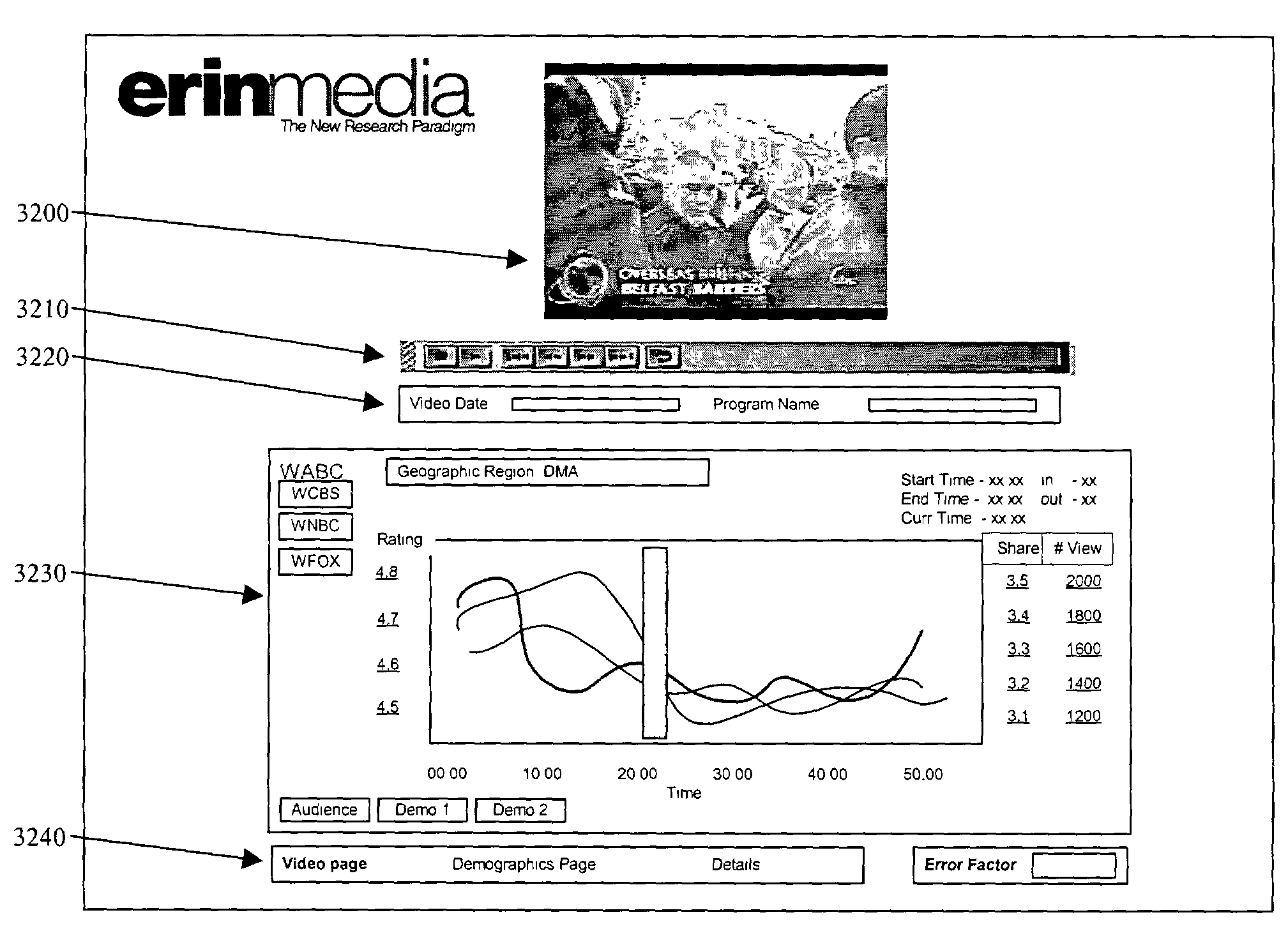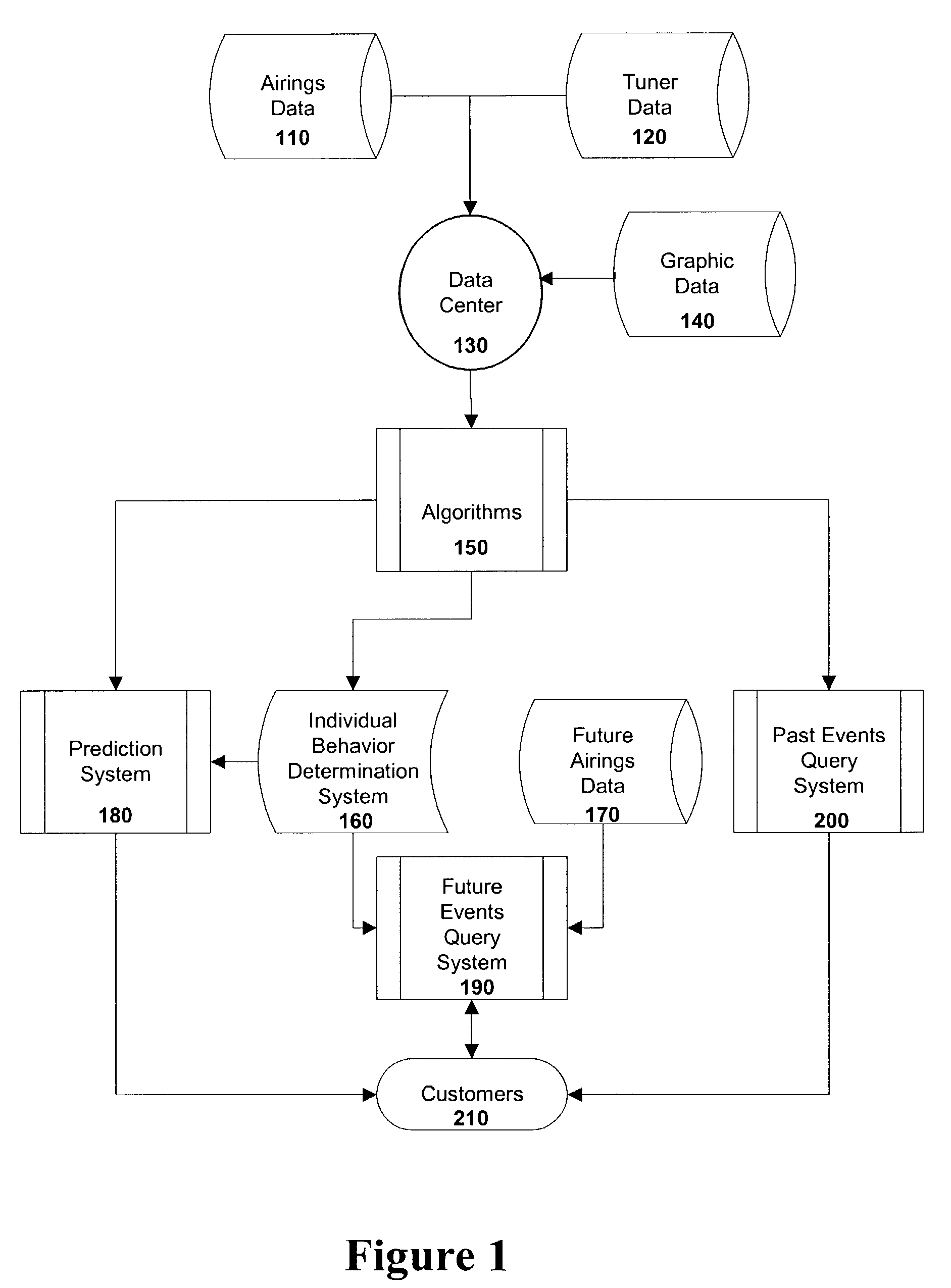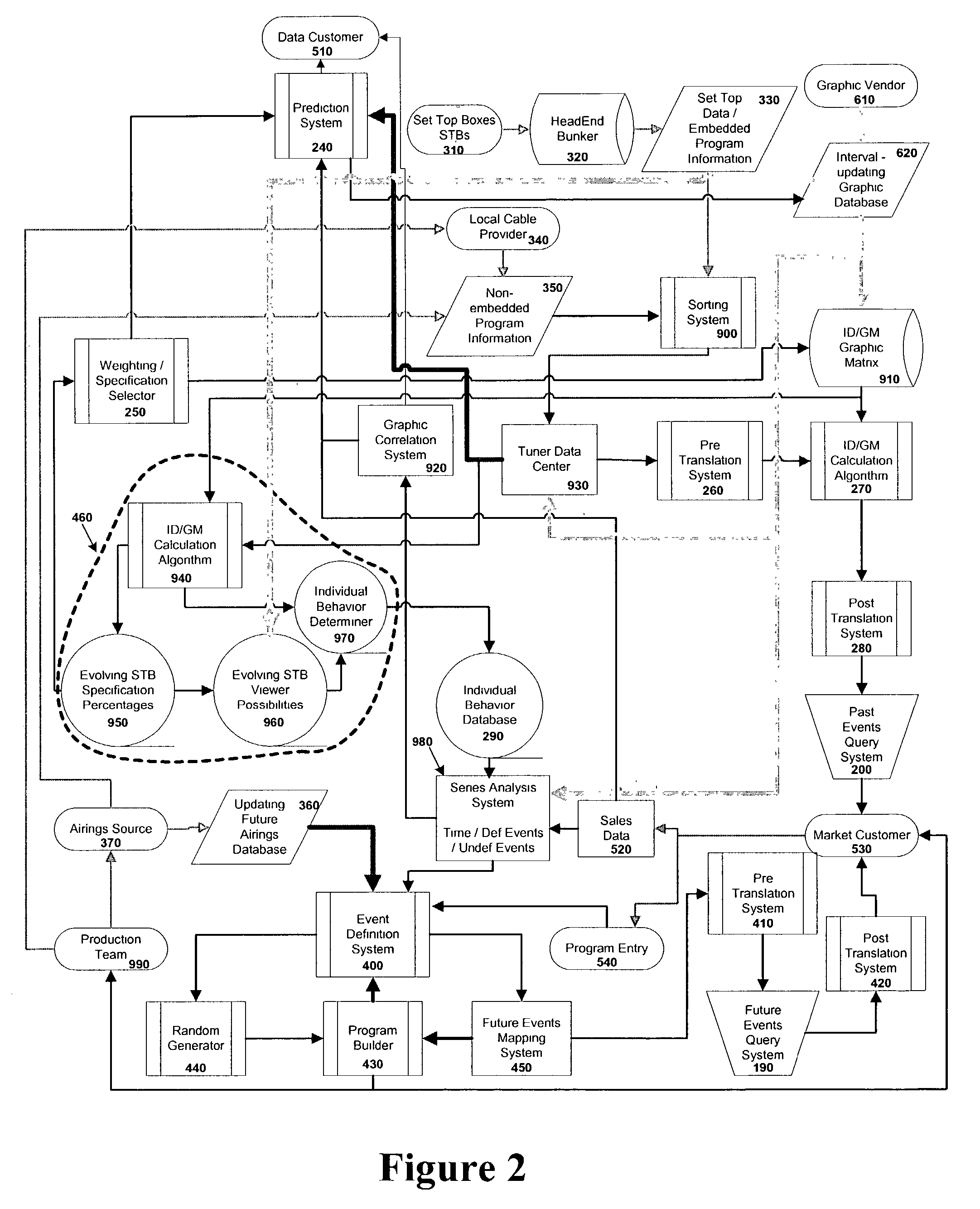Content reaction display
a content and display technology, applied in the field of data analysis, can solve the problems of large-scale data extrapolation to the population at large, low-validity information derived from small sample populations, and many different limitations of data mining, so as to reduce the cost per viewer
- Summary
- Abstract
- Description
- Claims
- Application Information
AI Technical Summary
Benefits of technology
Problems solved by technology
Method used
Image
Examples
Embodiment Construction
[0082]FIG. 1 is a block diagram providing a general overview of consumer data acquisition, prediction, and query systems of a preferred embodiment of the present invention and their interaction with each other. In this embodiment, the present invention may monitor user behavior while a user experiences television, radio, Internet, or other content. Examples of such content can include television shows, radio shows, music, advertisements, news, weather, and other multimedia or sensory-stimulating material.
[0083]Airings Data 110 comprises detailed content attributes. Examples of such content attributes include times at which such content was available; geographic or other regions to which such content was made available; actors or models appearing in or otherwise associated with such content; types of characters portrayed by such actors or models; content authors, producers, and directors; content genres, subjects, and settings; background music tones, tempo, and related characteristi...
PUM
 Login to View More
Login to View More Abstract
Description
Claims
Application Information
 Login to View More
Login to View More - R&D
- Intellectual Property
- Life Sciences
- Materials
- Tech Scout
- Unparalleled Data Quality
- Higher Quality Content
- 60% Fewer Hallucinations
Browse by: Latest US Patents, China's latest patents, Technical Efficacy Thesaurus, Application Domain, Technology Topic, Popular Technical Reports.
© 2025 PatSnap. All rights reserved.Legal|Privacy policy|Modern Slavery Act Transparency Statement|Sitemap|About US| Contact US: help@patsnap.com



